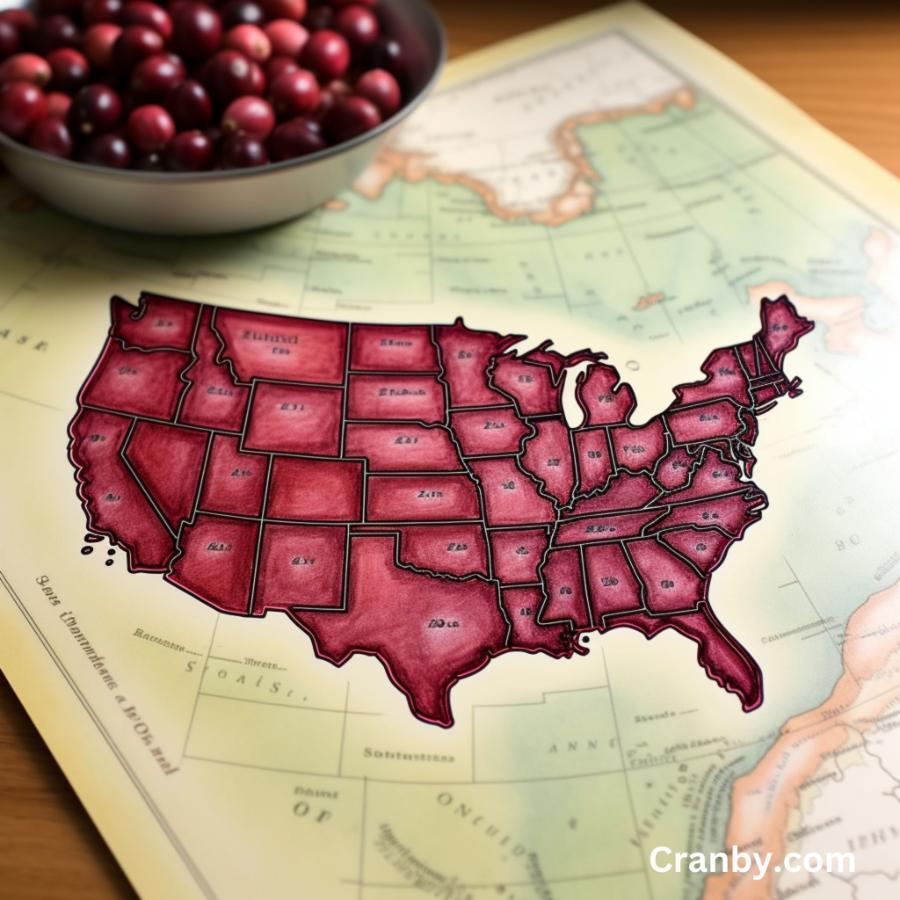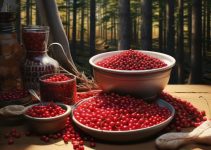
Oregon Cranberries
…
Oregon Cranberries
Fifth largest state that produces cranberries in the USA.
One of the state’s lesser-known agricultural endeavors is cranberry production. Oregon’s cranberry bogs yield a bounty that not only graces Thanksgiving tables across the nation but also contributes significantly to the state’s economy.
Historical Roots
Native tribes, including the Coquille, Klamath, and Chinook, recognized the value of these tart, red berries both as a food source and for their medicinal properties. The cranberry, Vaccinium macrocarpon, found in Oregon’s wetlands and bogs, became an integral part of their diets and cultural practices.
These communities not only harvested wild cranberries but also cultivated them in certain areas, displaying an early understanding of sustainable agriculture. Their methods involved creating makeshift bogs by diverting water into low-lying areas, mimicking the natural conditions favored by cranberries. These ancient practices laid the foundation for the cranberry industry that would later take root in Oregon.
[Read: Massachusetts, 2nd in Cranberry Production]
Creating the Bogs
The coastal regions, particularly around Bandon and Coos Bay, provide the ideal conditions for cranberry bogs. The acidic, sandy soils and ample water supply create an environment conducive to cranberry growth.
One of the distinctive features of cranberry cultivation is the flooded bog method. Cranberries, unlike most fruits, thrive in wet conditions. Growers flood the fields to facilitate easier harvesting. The buoyancy of the cranberries allows for efficient separation from the vines, and the berries float to the surface, ready for collection.
The planting process is meticulous, with growers considering factors such as soil composition, water management, and disease control. Cranberry vines are planted in sandy, acidic soil, and the bogs are equipped with an intricate system of ditches and channels to control water levels. This attention to detail ensures that the cranberries receive the optimal growing conditions.
Harvesting
Come fall, the cranberry bogs transform into a sea of crimson as the berries ripen. Harvesting typically occurs between September and November, depending on weather conditions and the specific variety of cranberries grown. The flooded bog method, a sight to behold, involves flooding the fields with water, causing the ripe berries to detach from the vines and float to the surface.
Mechanical harvesters, resembling large, specialized tractors, move through the flooded bogs, gently combing the berries off the vines. The floating berries are then corralled and collected for further processing. This method not only streamlines the harvesting process but also reduces the physical impact on the delicate cranberry vines.
The harvested berries undergo rigorous quality control measures before reaching the market. Only the finest cranberries make the cut, ensuring that consumers receive a product of exceptional taste and texture.

Cranberry Bog
Economic Contribution
According to the Oregon Cranberry Growers Association, the state consistently ranks among the top cranberry-producing regions in the United States.
The 2023 cranberry crop in Oregon is forecast to be 470,000 barrels, up 17.5% from 2022.
Oregon’s cranberry harvest isn’t solely reserved for domestic consumption. The state’s cranberries find their way into various products, including juices, sauces, and dried snacks, adding value to the agricultural output. The export of cranberries contributes to international trade, showcasing Oregon’s prowess in agricultural production on a global scale.
[Read: How much money does the Cranberry Industry bring In?]
Challenges and Sustainability Efforts
While cranberry production in Oregon has seen considerable success, it is not without its challenges. Like any agricultural endeavor, cranberry farming is susceptible to seasonal weather fluctuations, pests, and diseases.
To address these challenges, Oregon cranberry growers have embraced sustainable practices. Water management is a critical aspect, with many farms adopting efficient irrigation systems to optimize water use. Integrated pest management techniques help control pests without excessive reliance on chemicals, promoting a balanced and sustainable ecosystem within the cranberry bogs.
The End Result!
As consumers savored the tartness of cranberry sauce on Thanksgiving tables across the nation last week, it’s worth appreciating the journey these crimson jewels undertake from the flooded bogs of Oregon to our plates.
Beyond the holiday season, the economic and environmental impact of cranberry production in the state continues to ripple through communities, showcasing the enduring legacy of this vibrant and essential industry.
– Cranby

USA Cranberries




